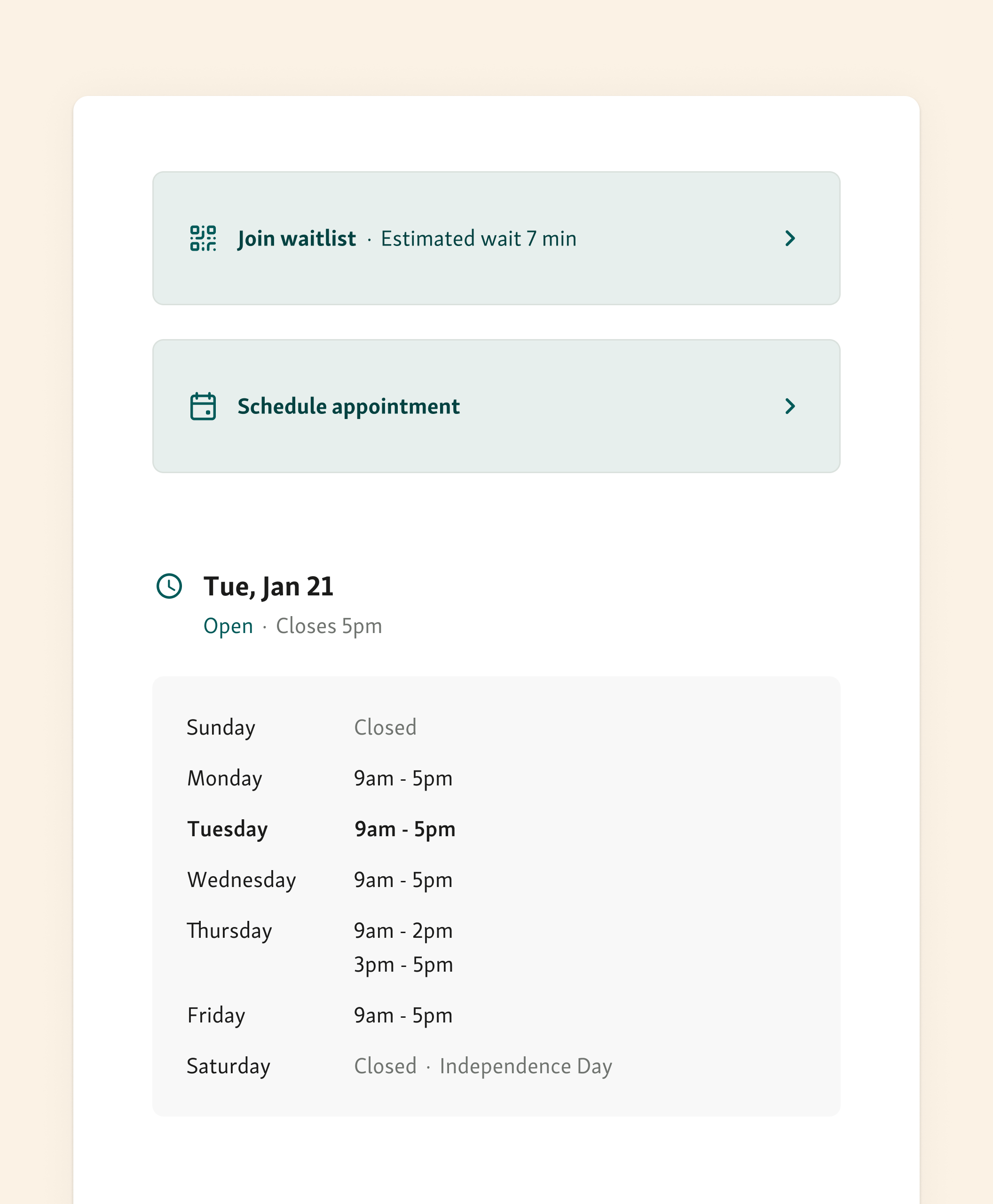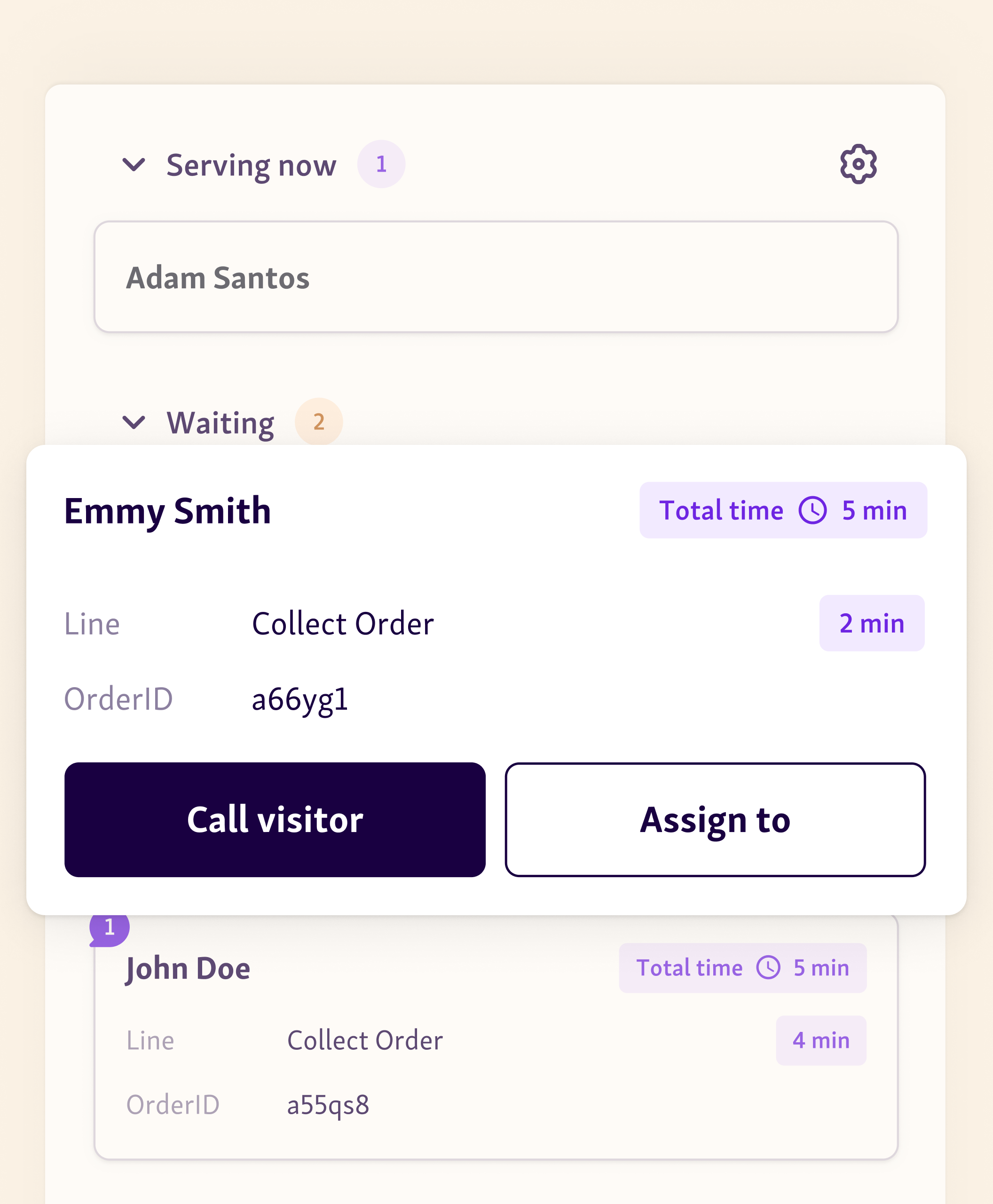Digital Take a Number system
Ditch paper numbers.
Go digital.
Deliver world-class customer service at any scale with Qminder’s flexible, digital take-a-number system. Designed to increase throughput, reduce wait stress, and elevate satisfaction across every visit.

What is a digital take-a-number system?
A digital take-a-number system lets customers join a queue without paper tickets or physical lines.
Instead of pulling a printed number, customers take a number digitally via website, kiosk, tablet, or screen. They receive a clear place in line and wait comfortably while staff manage the queue from a simple interface.

No paper tickets
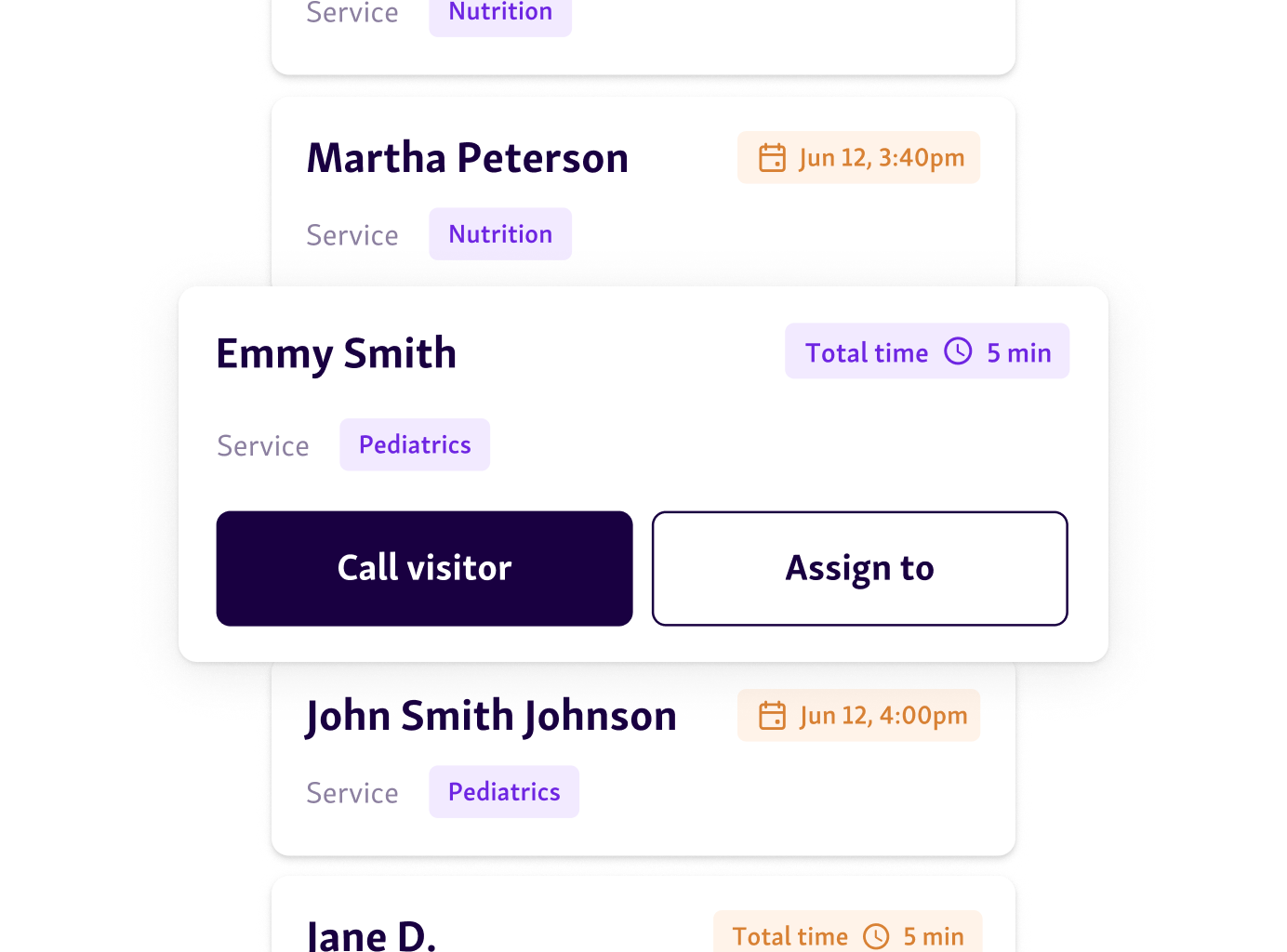
Faster, more organized service

Higher customer satisfaction
Great customer experiences, powered by data
Equip your business with a powerful toolkit to drive both customer and employee excellence. Build you success atop the five pillars of great customer service.
Greet visitors with a self-service check-in solution
Put your customers behind the wheel of checking in, while reducing the workload of your service agents. Collect customer data and use it to further enhance the experience, by understanding your visitors better.
Flexible configuration to best suit your needs
Multilingual settings to greet visitors in their language
Wireless capabilities

Guide customers with digital signage
Inform visitors about their queue status, in real time. Update the customer waiting list shown on a TV, and notify visitors when and where they need to go next.
Play attention-grabbing notifications
Guide customers to the right service desk
Use visitors’ names to create a welcoming environment
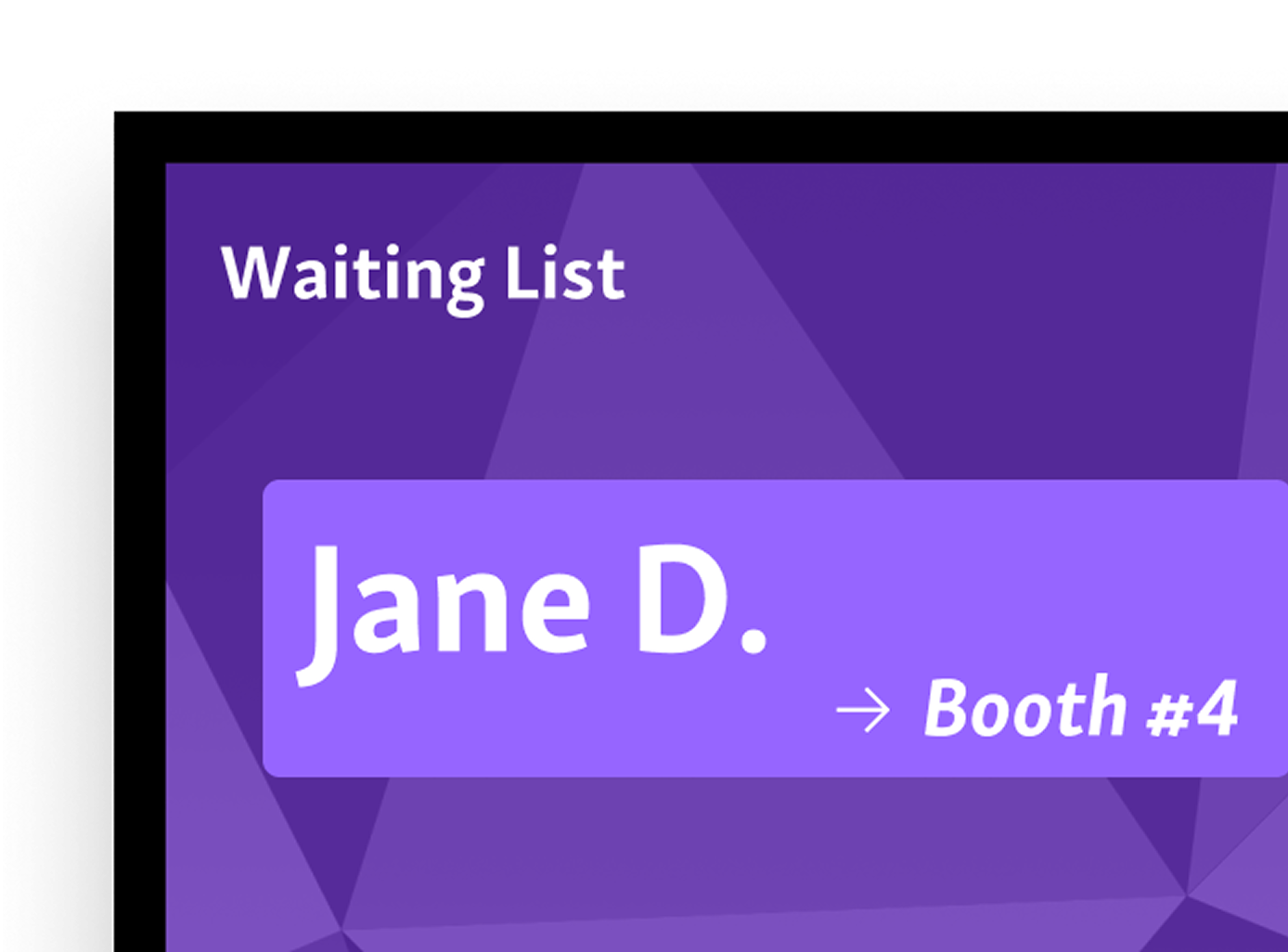
Chat with customers via text messaging
Manage and engage your customers via SMS text messaging. Confirm check-ins, notify about delays, call up for service, ask for post-service feedback, and more.
Automate SMS responses, depending on the situation
Offer helpful guidance and set up reminders
Engage in a two-way SMS conversation with customers
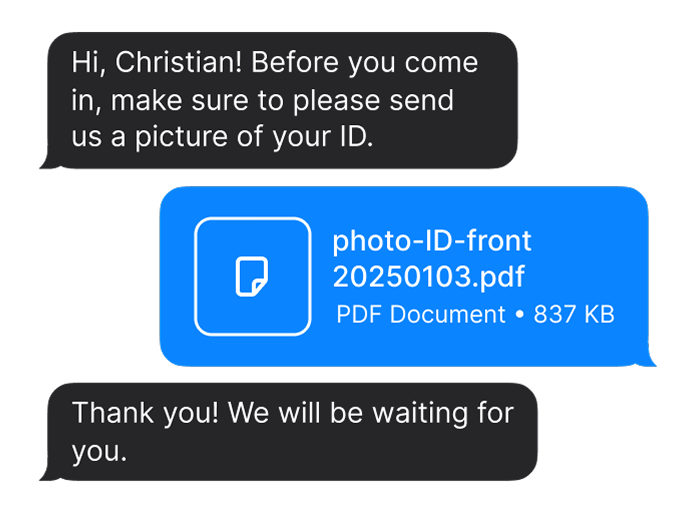
Enrich customer experiences with a service dashboard
Empower clerks and managers with a flexible suite from our digital take-a-number system. Speed up the service flow, and use visitor data to personalize each customer experience.
Manage and serve customers with a few clicks
Offer name-based, personalized customer service
Measure and boost your location’s performance
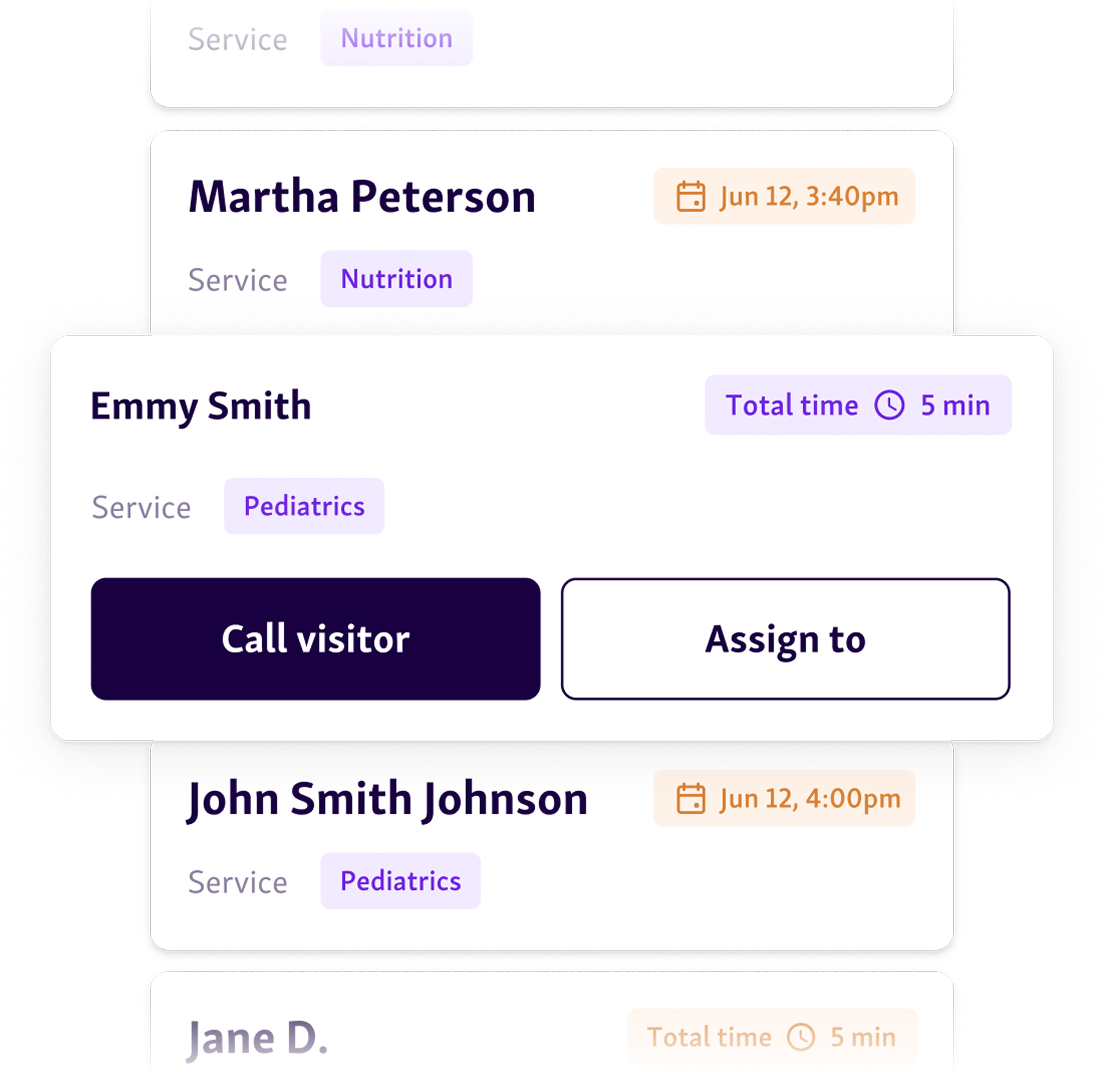
Optimize your business with service analytics
Qminder's take-a-number system measures your staff’s and locations’ performance, and make data-backed business decisions. Gain insights into customer behavior to offer enhanced service experiences.
Gather performance data across different locations
Get service data reports delivered to your inbox
Find and predict service and staffing trends

The results
We’ve powered over 1+ billion seamless service interactions for organizations like AT&T, Verizon, Uber, Apple, and many more.

For more insight on how a visitor management system can upgrade your visitor experience, check out our Montgomery Water Works and Sanitary Sewer Board case study.
Why choose Qminder?
We’ve boosted CSAT, operational efficiency, and key performance metrics for government agencies, healthcare providers, financial institutions, universities, and major retailers.
Unlimited locations
Unlimited visitors
Unlimited service lines
10 users
